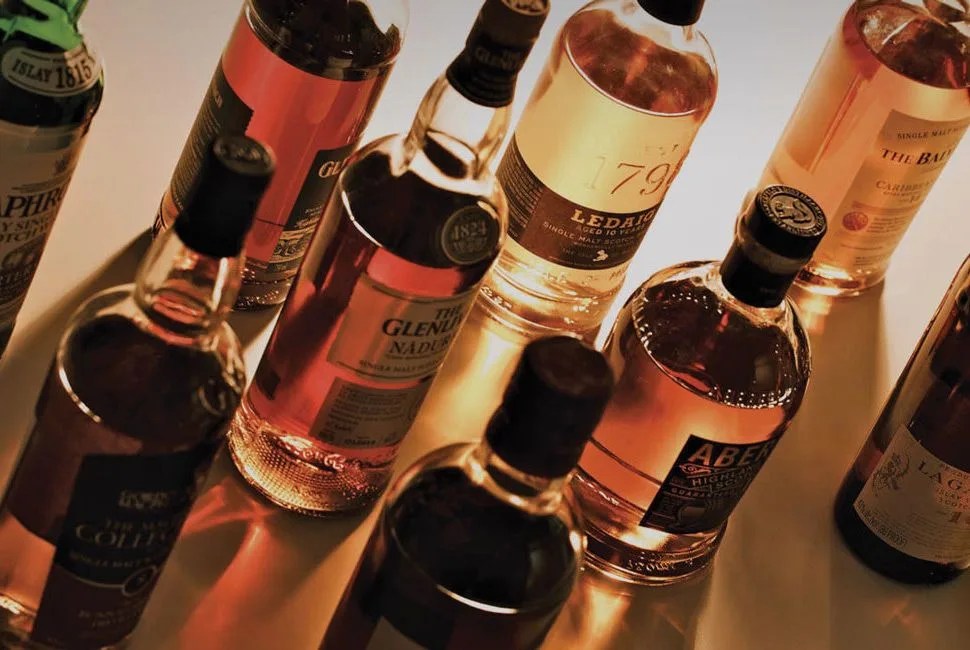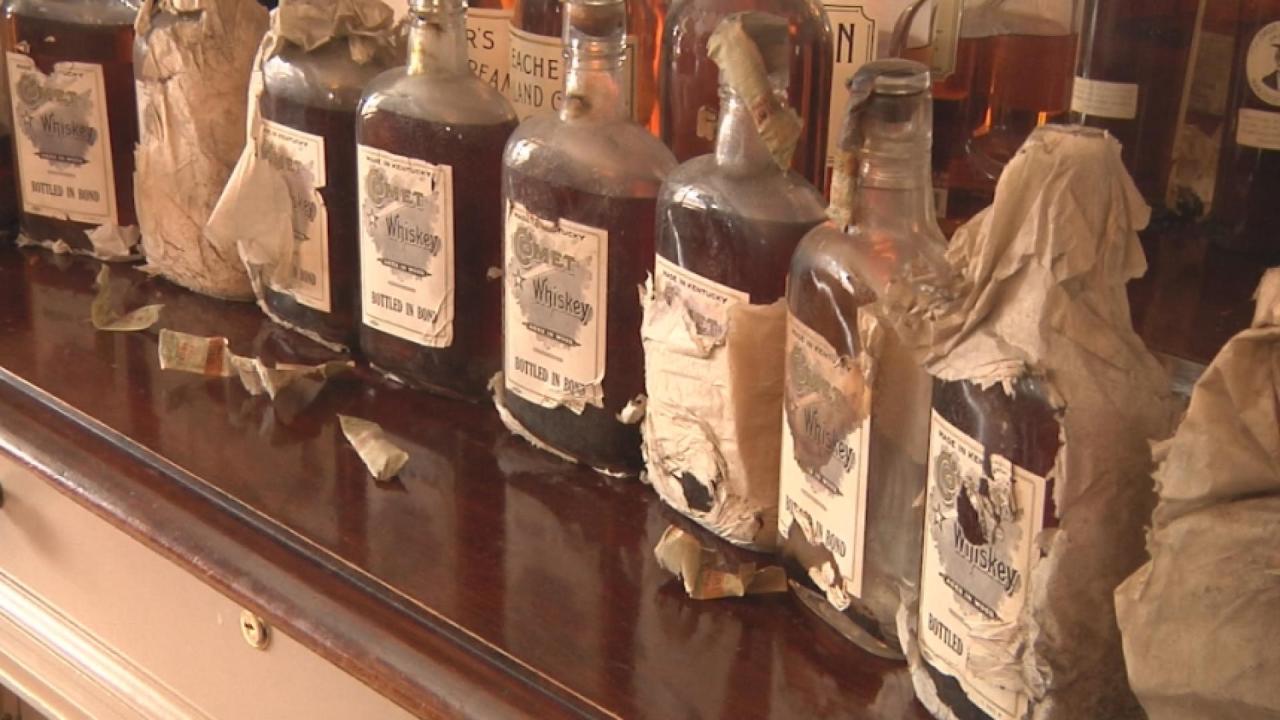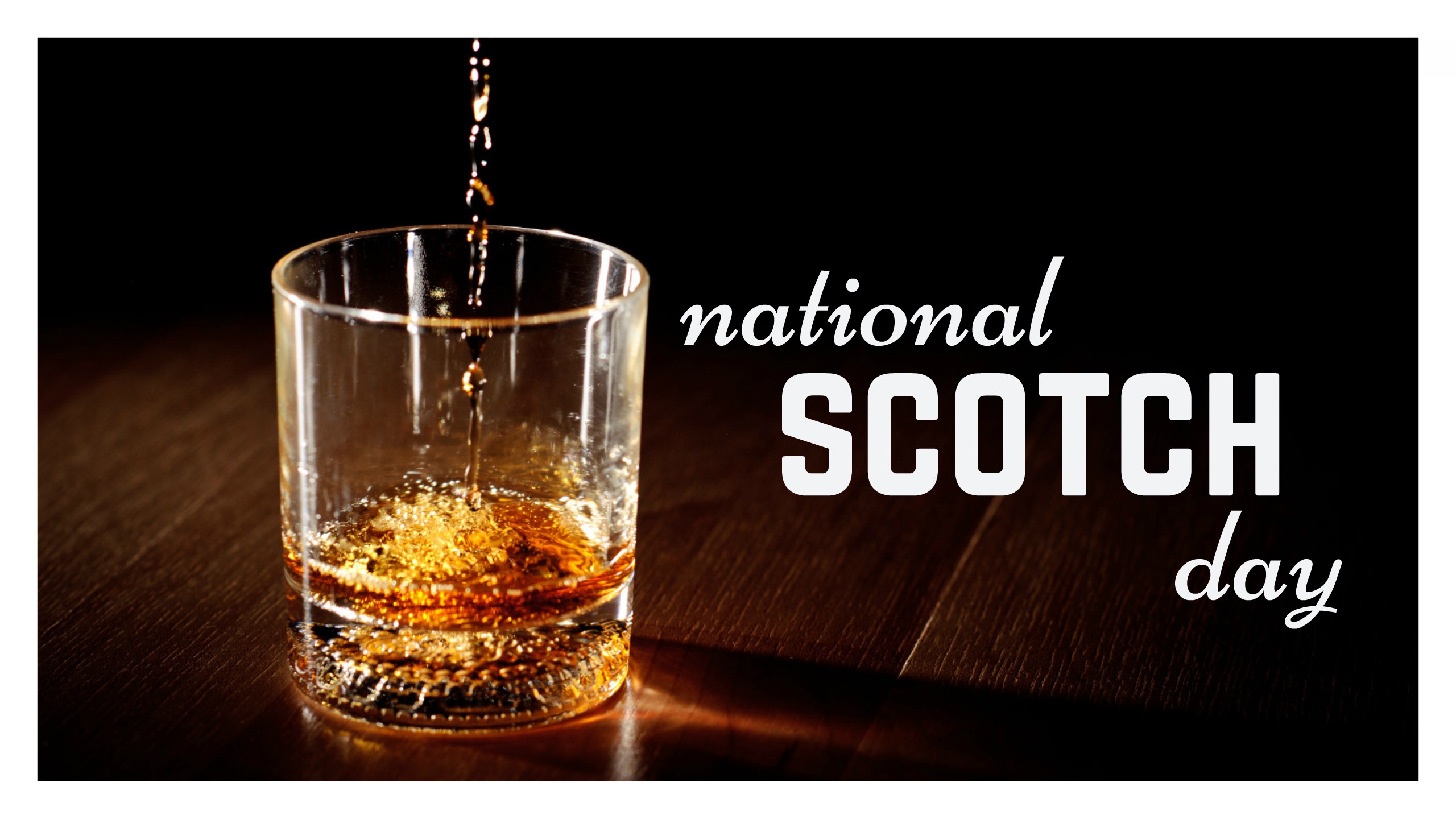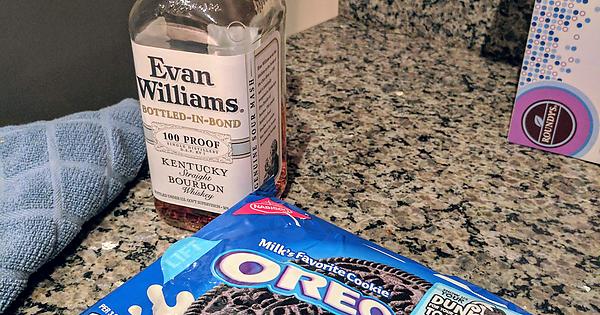You are using an out of date browser. It may not display this or other websites correctly.
You should upgrade or use an alternative browser.
You should upgrade or use an alternative browser.
Scotch Whisky / Bourbon Whiskey thread
- Thread starter Ibex
- Start date
BarnBuster
Virtually Unknown Member
Why You've Been Seeing a Lot More Rye Whiskey
by SAM DANGREMOND –Town and Country-JUL 22, 2019
Centuries before the bourbon boom, rye whiskey was America's spirit. Rye was what George Washington himself distilled at Mount Vernon, and if it weren't for Prohibition, when bootlegged Canadian whiskies took the place of rye, Americans may have never lost their penchant for the spicy and bold spirit.
Now, Americans' palate for rye whiskey—which must be made from at least 51 percent rye grain—is decidedly restored. Sales volumes rose by more than 1,000 percent between 2009 and 2018, according to the Distilled Spirits Council. In 2018, 1.1 billion cases of rye were sold.
What accounts for the resurgence in popularity? Ask experts, and one man's name comes up again and again: Dave Pickerell.
The New York Times dubbed Pickerell, who died of heart failure last November at 62, a "master of whiskey and rye." The paper also noted his nickname: the Johnny Appleseed of American whiskey. Pickerell, a West Point graduate and chemical engineer, spent 14 years at Maker's Mark before leaving to consult with craft distilleries.
When Mount Vernon embarked on a mission to produce rye whiskey at the reconstructed distillery that George Washington had built there 200 years earlier, leaders at the historic landmark sought out Pickerell as an expert, along with other master distillers like Chris Morris of Woodford Reserve and Jack Daniel's and Jimmy Russell of Wild Turkey.
"Over the course of nearly a decade, Dave became a valued part of many other projects at our distillery, including the production of apple and peach brandy, Scotch, and our aged rye whiskeys. Each year, Dave continued to teach and assist in the production of George Washington rye whiskey, single malt whisky, and brandies," the Mount Vernon Ladies’ Association, which maintains the historic landmark, said in a statement after Pickerell's death.
After reestablishing the distillery at Mount Vernon, Pickerell turned his attention to a start-up rye operation based on a farm in Shoreham, Vermont. WhistlePig hired Pickerell as its master distiller in 2009.
"Dad was a history buff, and he loved that rye was America's spirit earlier in American history," Dave's son, Micah Pickerell, told me. "He didn't like that our national whiskey was all but gone from the market [at the time]. He saw it as a big opportunity in the market for growth."
"One of the really big ideas that he wanted to bring to market was really good rye whiskey, and WhistlePig was his baby in that regard," Micah said. "It was really well received in the market right from the beginning, and that was vindication for him."
WhistlePig's CEO, Jeff Kozak, echoed that sentiment, adding that with Dave as master distiller, WhistlePig was able to blur the categories of traditional rye whiskey.
"Nobody had ever finished rye whiskey in exotic barrels, and Dave's short finishing technique was what allowed all the complexity of Sauternes, Armagnac, Calvados to shine through but not over power rye's inherent spiciness and richness in WhistlePig's Boss Hog and Old World Series," Kozak said.
Earlier this year, WhistlePig released PiggyBack, the last whiskey on which Pickerell ever worked. The six-year-old whiskey is made using rye grain from WhistlePig's Vermont farm, where it is also distilled and aged in Vermont white oak barrels.
In addition to WhistlePig's latest release, larger whiskey makers launched ryes this year. Bulleit introduced a 12-year-old rye and Basil Hayden’s debuted a Caribbean Reserve Rye. Dan McKee, who was recently promoted to master distiller at Michter's, announced that his first release would be a 10-year-old single-barrel rye whiskey. The rye craze seems to be here to stay.
by SAM DANGREMOND –Town and Country-JUL 22, 2019
Centuries before the bourbon boom, rye whiskey was America's spirit. Rye was what George Washington himself distilled at Mount Vernon, and if it weren't for Prohibition, when bootlegged Canadian whiskies took the place of rye, Americans may have never lost their penchant for the spicy and bold spirit.
Now, Americans' palate for rye whiskey—which must be made from at least 51 percent rye grain—is decidedly restored. Sales volumes rose by more than 1,000 percent between 2009 and 2018, according to the Distilled Spirits Council. In 2018, 1.1 billion cases of rye were sold.
What accounts for the resurgence in popularity? Ask experts, and one man's name comes up again and again: Dave Pickerell.
The New York Times dubbed Pickerell, who died of heart failure last November at 62, a "master of whiskey and rye." The paper also noted his nickname: the Johnny Appleseed of American whiskey. Pickerell, a West Point graduate and chemical engineer, spent 14 years at Maker's Mark before leaving to consult with craft distilleries.
When Mount Vernon embarked on a mission to produce rye whiskey at the reconstructed distillery that George Washington had built there 200 years earlier, leaders at the historic landmark sought out Pickerell as an expert, along with other master distillers like Chris Morris of Woodford Reserve and Jack Daniel's and Jimmy Russell of Wild Turkey.
"Over the course of nearly a decade, Dave became a valued part of many other projects at our distillery, including the production of apple and peach brandy, Scotch, and our aged rye whiskeys. Each year, Dave continued to teach and assist in the production of George Washington rye whiskey, single malt whisky, and brandies," the Mount Vernon Ladies’ Association, which maintains the historic landmark, said in a statement after Pickerell's death.
After reestablishing the distillery at Mount Vernon, Pickerell turned his attention to a start-up rye operation based on a farm in Shoreham, Vermont. WhistlePig hired Pickerell as its master distiller in 2009.
"Dad was a history buff, and he loved that rye was America's spirit earlier in American history," Dave's son, Micah Pickerell, told me. "He didn't like that our national whiskey was all but gone from the market [at the time]. He saw it as a big opportunity in the market for growth."
"One of the really big ideas that he wanted to bring to market was really good rye whiskey, and WhistlePig was his baby in that regard," Micah said. "It was really well received in the market right from the beginning, and that was vindication for him."
WhistlePig's CEO, Jeff Kozak, echoed that sentiment, adding that with Dave as master distiller, WhistlePig was able to blur the categories of traditional rye whiskey.
"Nobody had ever finished rye whiskey in exotic barrels, and Dave's short finishing technique was what allowed all the complexity of Sauternes, Armagnac, Calvados to shine through but not over power rye's inherent spiciness and richness in WhistlePig's Boss Hog and Old World Series," Kozak said.
Earlier this year, WhistlePig released PiggyBack, the last whiskey on which Pickerell ever worked. The six-year-old whiskey is made using rye grain from WhistlePig's Vermont farm, where it is also distilled and aged in Vermont white oak barrels.
In addition to WhistlePig's latest release, larger whiskey makers launched ryes this year. Bulleit introduced a 12-year-old rye and Basil Hayden’s debuted a Caribbean Reserve Rye. Dan McKee, who was recently promoted to master distiller at Michter's, announced that his first release would be a 10-year-old single-barrel rye whiskey. The rye craze seems to be here to stay.
BarnBuster
Virtually Unknown Member
Whiskey Barrel Charring
Blakle at Boubonr 7/29/19Barrel charring is probably one of the most exciting and spectacular things you will come across, as you learn more about American Whiskey. It is unclear how it all started – and there are a lot of interesting theories out there. The most famous one is probably about the Baptist Minister Elijah Craig and the lightning in his barn that accidentally charred his barrels, during the ensuing fire. The story is very likely not true – but it would have been SO cool if it had. The theory that I believe in the most, is that barrel charring simply started because they were trying to remove the smell, of what had previously been in the barrels. You know .. salted fish, oil, and other goodies …. Bourbonr Note: Check out Fred Minnick’s Bourbon Curious for more on this subject.
But … this is a nerdy post – and not a history post – so if you are interested in the historical aspect, you can knock yourself out on Google, I guess – or buy one of the great books about American Whiskey.
What happens inside the wood is basically insane – and you can read about the details below.
By law, many of the American Whiskey types must be aged in new charred oak barrels (technically “containers”, but everybody uses barrels). You char the barrels on the inside using flames, obviously, and some use a gas burner, and some use a “natural” furnace, based on left-over wood from the manufacturing process.
Even though it is not actually an official scale, most manufacturers work with so-called “char levels”, and the consensus is, that the wood is burned as follows:
- Char level #1: 15 seconds
- Char level #2: 30 seconds
- Char level #3: 35 seconds (some go to 45)
- Char level #4: 55 seconds

From left: Untouched, lightly toasted, heavy toasted and char level 1 through 4. I will cover toasting in a separate post.
Level #4 is sometimes referred to as “alligator” char, as the wood looks like the back of an alligator after those 55 seconds – as you may be able to spot from in the picture above. In principle, the scale goes beyond level #4, and there was a famous example of this a few years back when Buffalo Trace released one of their experimental bottles with a level #7 char. According to them, they had charred those barrels for a whopping 3-3½ minutes:
Is longer charring better, then? That very much depends on the flavor/taste profile you are seeking out. Think of charring as a kind of seasoning. Is more seasoning in your food better? That answer will also vary from person to person. Most companies, however, tend to prefer the higher char levels – and as you will read later, there are good reasons for that.
So far, so good. Let’s dig one step further.
There are basically four main reasons why whiskey benefits from barrel charring:
- It brings color to the new whiskey that comes from the distillation. You may already know that new whiskey (white dog) is completely clear, and while the liquid will take color from a barrel that has not been charred – charring helps immensely with the coloring.
- It increases the surface of the wood inside the barrel. If you look at the alligator char example above, you can clearly see why there is more surface, compared with flat staves. Increased surface means that there are more entry points for the whiskey to interact with the wood.
- It “prepares” the wood. Just like barrel toasting (which I will cover in an upcoming post), charring changes some of the chemical compounds within the wood. The three primary compounds in oak wood are cellulose, hemicellulose, and lignin. And while cellulose remains largely unchanged during heat variations, the others change significantly. Hemicellulose will tend to convert into wood sugars – and it is from these special sugars you get some of the classic notes like caramel and toffee. Lignin breaks down into vanillin, which is where the vanilla notes come from.
- It draws the natural sugars closer to the liquid. When the sugars in the wood meet extreme heat, it will push those sugars towards the heat source which, in turn, will cause the sugars to caramelize. Caramel is much tougher to burn through, and this is Mother Nature’s way of protecting the wood – and this exactly what you see in nature with living trees. Amazing. Why is this important? Read on for our final deep dive.
When the sugar caramelizes as described above, it creates a so-called “red line” in the wood – just under the char itself. When the new whiskey is added to the barrels, it is typically done at (relatively) cool temperatures at the filling stations – and the barrels are filled to the top.
When the temperature rises during the summer months, the liquid expands and is therefore pressed into the wood. And the first thing it meets is the red line with the caramelized sugars. And when the liquid meets those sugars, it extracts a plethora of flavors – and the magic of aging is starting to happen. When the temperature gets colder, the liquid contracts – and those lovely wood sugar flavors are mixed with the rest of the whiskey. Over the seasons, this happens again and again – and many refer to this as “the whiskey is breathing”. Some manufacturer have implement climate control in the warehouses, so that they can introduce additional “heat cycles”, over and above the four natural seasons. It will allow the whiskey to breathe faster – and thus speed up the maturation process.
So … who would have thought: They probably started, back in the day, with charring barrels to remove odors from salted fish – and they ended up withdrawing the wood sugars closer the inner surface so that the whiskey became better. I freakin’ love nature.
And then just one more thing …
There is another “red line” in the wood, that is actually not a red line, but rather a “soak line”. Everybody gets them mixed up, so here’s the actual difference:
The “red line” is the caramelized layer of sugars just underneath the char – and barely visible. The “soak line” is how far the whiskey has penetrated the wood. As you can see from the picture below, it typically penetrates a few millimeters into the staves but goes much further on the sides, where the staves are joined together. This is not surprising, of course, as it is impossible to join the staves 100% together as if they were one.

http://bourbonr.com/blog/
Don_Sequitor
Well-Known Member
@Singlemalt - I promised you a whisky review way back when.
I drank a bottle of this, and it was vexingly hard for me to pin down.

The painted bottle is a nice color, but there's no way to see the liquid level. The empty was also massive, which had as a consequence ~invert~ ~drip~ what, already??
The flavors are difficult for me to describe. They kept changing. I don't blame the whisky- I blame my taste and smell perversion.

There is a bright malt on the nose and palate, but it is somehow coarser than, say a Glenlivet Nadurra. There's a faint "cotton candy/scooter pie" note that I find a little out of place, what with I'm spoiled by Glenlivet products.
There is nice balanced wood in the mouth (!), but it is not as smooth as the wood in a Glenlivet 15.
The thing I found weirdest is that smoky/burnt flavors seemed to come and go.
Once I tasted a peat-smoke sort of taste.
The other time there was a bitter black char flavor, especially on the finish. But when I tasted for these outlier sensations again, I could not honestly discern them.
Overall a good whisky but there's better to be had at the same price.
Lately my "basic drinker" has been this. Delicious and cheaper/better than Glenlivet 12.
There it is, today's Toki Talki

Bruichladdich is very aggressive from my second-hand experience. If you use a vial of ambient temperature water to add drops to your scotch and Irish whiskey, then that is one you'd want to leave alone. Very aggressive approach, if you are in to that sort of thing.
I tried Blanton's once recently. the upcoming bottle I'm seeking is called, "Weller." It's actually easier to find outside of Kentucky because fewer people have heard of about them. In Kentucky, Weller's is in high demand.
cannabineer
Ursus marijanus
Bruichladdich is very aggressive from my second-hand experience. If you use a vial of ambient temperature water to add drops to your scotch and Irish whiskey, then that is one you'd want to leave alone. Very aggressive approach, if you are in to that sort of thing.
I tried Blanton's once recently. the upcoming bottle I'm seeking is called, "Weller." It's actually easier to find outside of Kentucky because fewer people have heard of about them. In Kentucky, Weller's is in high demand.
They are probably going to become a thing. Wasn't there an episode of jackass where Steve-O did a butt chug? Not necessary a breakthrough in the world of alcohol to be a thing.
BarnBuster
Virtually Unknown Member
BarnBuster
Virtually Unknown Member
"A 15-year-old dispute between the U.S. and European Union over government subsidies given to airplane manufacturers is coming to a head. That spells bad news for Stateside Scotch whisky drinkers.
According to the BBC, the World Trade Organization recently gave the U.S. government approval to impose tariffs on $7.5 billion in goods from the EU. The U.S. supplied a list of products produced in a number of European nations that would be subject to the new 25 percent tariff. On it: all whisky produced in the UK, including Scotch whisky and Irish whiskey.
The tariff goes into action on October 18th. Here’s how that could affect your next trip to the liquor store.
“I don’t think there will be a lag time or delay with the tariff affecting price,” said Jonathan Goldstein, owner of New York City’s popular Scotch whisky store Park Avenue Liquor Shop. That’s because of the way the alcohol industry is structured — where producers may only sell to distributors, who may only sell to retailers, who may sell to consumers. Distributors will learn that their products have gone up in price and markups will be imposed to meet their own margins. Immediately.
Nima Ansari, head spirits buyer at Astor Wine & Spirits, said, based on the tariffs going into effect on October 18th, prices can technically go up as early as November 1, when the retailer’s wholesale price has spiked due to rising prices for the rest of the supply chain.
Scotch prices increasing by 25 percent would be troublesome but conservative; Goldstein says to expect larger price spikes: “Everyone has to take their margins into account when the price jumps for everybody — producers, distributors, importers and retailers. Let’s say my wholesale cost is just 25 percent more; well I also work on my own percentage, so my markup has to be that much more to get it on the shelf. I think it’s going to be a disaster. If people were struggling with the concept of a $50, non-age-statement whisky before, they’re going to be shocked in a few weeks.”

 gearpatrol.com
gearpatrol.com
According to the BBC, the World Trade Organization recently gave the U.S. government approval to impose tariffs on $7.5 billion in goods from the EU. The U.S. supplied a list of products produced in a number of European nations that would be subject to the new 25 percent tariff. On it: all whisky produced in the UK, including Scotch whisky and Irish whiskey.
The tariff goes into action on October 18th. Here’s how that could affect your next trip to the liquor store.
“I don’t think there will be a lag time or delay with the tariff affecting price,” said Jonathan Goldstein, owner of New York City’s popular Scotch whisky store Park Avenue Liquor Shop. That’s because of the way the alcohol industry is structured — where producers may only sell to distributors, who may only sell to retailers, who may sell to consumers. Distributors will learn that their products have gone up in price and markups will be imposed to meet their own margins. Immediately.
Nima Ansari, head spirits buyer at Astor Wine & Spirits, said, based on the tariffs going into effect on October 18th, prices can technically go up as early as November 1, when the retailer’s wholesale price has spiked due to rising prices for the rest of the supply chain.
Scotch prices increasing by 25 percent would be troublesome but conservative; Goldstein says to expect larger price spikes: “Everyone has to take their margins into account when the price jumps for everybody — producers, distributors, importers and retailers. Let’s say my wholesale cost is just 25 percent more; well I also work on my own percentage, so my markup has to be that much more to get it on the shelf. I think it’s going to be a disaster. If people were struggling with the concept of a $50, non-age-statement whisky before, they’re going to be shocked in a few weeks.”

Scotch Whisky Prices Are About to Skyrocket. Here’s What That Means for You | Gear Patrol
Among other things, the US has imposed significant tariffs on scotch whisky. Here's what you need to know.
Singlemalt
Well-Known Member
At least I treated it like ammo, I stockpiled"A 15-year-old dispute between the U.S. and European Union over government subsidies given to airplane manufacturers is coming to a head. That spells bad news for Stateside Scotch whisky drinkers.
According to the BBC, the World Trade Organization recently gave the U.S. government approval to impose tariffs on $7.5 billion in goods from the EU. The U.S. supplied a list of products produced in a number of European nations that would be subject to the new 25 percent tariff. On it: all whisky produced in the UK, including Scotch whisky and Irish whiskey.
The tariff goes into action on October 18th. Here’s how that could affect your next trip to the liquor store.
“I don’t think there will be a lag time or delay with the tariff affecting price,” said Jonathan Goldstein, owner of New York City’s popular Scotch whisky store Park Avenue Liquor Shop. That’s because of the way the alcohol industry is structured — where producers may only sell to distributors, who may only sell to retailers, who may sell to consumers. Distributors will learn that their products have gone up in price and markups will be imposed to meet their own margins. Immediately.
Nima Ansari, head spirits buyer at Astor Wine & Spirits, said, based on the tariffs going into effect on October 18th, prices can technically go up as early as November 1, when the retailer’s wholesale price has spiked due to rising prices for the rest of the supply chain.
Scotch prices increasing by 25 percent would be troublesome but conservative; Goldstein says to expect larger price spikes: “Everyone has to take their margins into account when the price jumps for everybody — producers, distributors, importers and retailers. Let’s say my wholesale cost is just 25 percent more; well I also work on my own percentage, so my markup has to be that much more to get it on the shelf. I think it’s going to be a disaster. If people were struggling with the concept of a $50, non-age-statement whisky before, they’re going to be shocked in a few weeks.”

Scotch Whisky Prices Are About to Skyrocket. Here’s What That Means for You | Gear Patrol
Among other things, the US has imposed significant tariffs on scotch whisky. Here's what you need to know.gearpatrol.com
BarnBuster
Virtually Unknown Member
Father and Son
The son lives in town, the father lives alone on the family farm several miles outside of town. Every day, as is his custom, the father walks into town, purchases a pint of whiskey, and walks back to his farm. For years, the son has enjoyed this daily opportunity to at least observe his father from his office window, but recently he has noticed that time is catching up with the old man. His stride has shortened and his gait has slowed. The daily walk has become a chore for him.
The son, being a devoted son and not wanting to see his father suffer (and having failed for years to persuade his father to abandon the farm and move to town), decides there is at least one small way he can give his poor father some relief. He purchases a 1.75 L bottle of his father’s favorite whiskey, drives out to the farm and gives his father the gift. The father, never a demonstrative man, accepts the gift and thanks his son, who returns to town.
The next day the son, still basking in the glow of his thoughtful deed, looks out the window to see his father once again walking into town. Moreover, his father seems to have aged ten years. His skin is pallid, his clothing is disheveled and he is walking with even move difficulty than usual. The son immediately rushes to his father’s side. “Dad,” he cries, “What are you doing? I brought you that bottle of whiskey so you wouldn’t have to make this walk every day.” The father slowly raises his head and looking directly into his sons eyes, whispers in a quiet voice, “Son, whiskey don’t keep.”
The son lives in town, the father lives alone on the family farm several miles outside of town. Every day, as is his custom, the father walks into town, purchases a pint of whiskey, and walks back to his farm. For years, the son has enjoyed this daily opportunity to at least observe his father from his office window, but recently he has noticed that time is catching up with the old man. His stride has shortened and his gait has slowed. The daily walk has become a chore for him.
The son, being a devoted son and not wanting to see his father suffer (and having failed for years to persuade his father to abandon the farm and move to town), decides there is at least one small way he can give his poor father some relief. He purchases a 1.75 L bottle of his father’s favorite whiskey, drives out to the farm and gives his father the gift. The father, never a demonstrative man, accepts the gift and thanks his son, who returns to town.
The next day the son, still basking in the glow of his thoughtful deed, looks out the window to see his father once again walking into town. Moreover, his father seems to have aged ten years. His skin is pallid, his clothing is disheveled and he is walking with even move difficulty than usual. The son immediately rushes to his father’s side. “Dad,” he cries, “What are you doing? I brought you that bottle of whiskey so you wouldn’t have to make this walk every day.” The father slowly raises his head and looking directly into his sons eyes, whispers in a quiet voice, “Son, whiskey don’t keep.”
BarnBuster
Virtually Unknown Member
1919 October 28
Congress passes the Volstead Act over President Woodrow Wilson’s veto. The Volstead Act provided for the enforcement of the 18th Amendment to the U.S. Constitution, also known as the Prohibition Amendment.
The movement for the prohibition of alcohol began in the early 19th century, when Americans concerned about the adverse effects of drinking began forming temperance societies. By the late 19th century, these groups had become a powerful political force, campaigning on the state level and calling for national liquor abstinence. In December 1917, the 18th Amendment, prohibiting the “manufacture, sale, or transportation of intoxicating liquors for beverage purposes,” was passed by Congress and sent to the states for ratification. In January 1919, the 18th amendment achieved the necessary two-thirds majority of state ratification, and prohibition became the law of the land.
The Volstead Act, passed nine months later, provided for the enforcement of prohibition, including the creation of a special unit of the Treasury Department. Despite a vigorous effort by law-enforcement agencies, the Volstead Act failed to prevent the large-scale distribution of alcoholic beverages, and organized crime flourished in America. In 1933, the 21st Amendment to the Constitution was passed and ratified, repealing prohibition.
BarnBuster
Virtually Unknown Member
Here's a pretty good bourbon that's been around for about a year. $50 if you can find it. Mashbill: 78% Corn, 12% Malted Barley, 10% Rye. A whopping 117 proof.
Ratings & Reviews - Whisky Advocate
Search over 5,000 reviews of bourbon, rye, scotch, Japanese, Irish, Canadian, and more whiskies using price, score, style, and brand.
BarnBuster
Virtually Unknown Member
If you're a bourbon drinker, you may want to check with your State Liquor control board and see if they are offering a lottery for the purchase Pappy Van Winkle. I see Virginia and Ohio are this month.
BarnBuster
Virtually Unknown Member
The U.S. is weighing tariffs of up to 100% on European products the Trump administration previously absolved from such duties, targeting some of the euro zone’s most emblematic products, including Irish and Scotch whiskies and Cognac.

 www.cnbc.com
www.cnbc.com

US weighing 100% tariffs on more EU products including whiskies and Cognac, according to documents
The U.S. is weighing tariffs of up to 100% on European products it previously absolved, including Irish and Scotch whiskies and Cognac.
BarnBuster
Virtually Unknown Member
cannabineer
Ursus marijanus
raratt
Well-Known Member

CHEERS: Homeowners find Prohibition-era whiskey stash in wall of Oregon house
PENDLETON, Oregon (KNDU) Two Oregon homeowners have found not one, but 10 bottles of Prohibition-era whiskey inside of their bed and breakfast – and it’s not the first time. …
BarnBuster
Virtually Unknown Member
Not spirits, but how special was this tasting..

 www.christies.com
www.christies.com

What does a fine wine taste like after 150 years? | Christie's
Tasting notes from a Christie’s Wine Department dinner showcasing the singular charms of wines spanning three centuries








